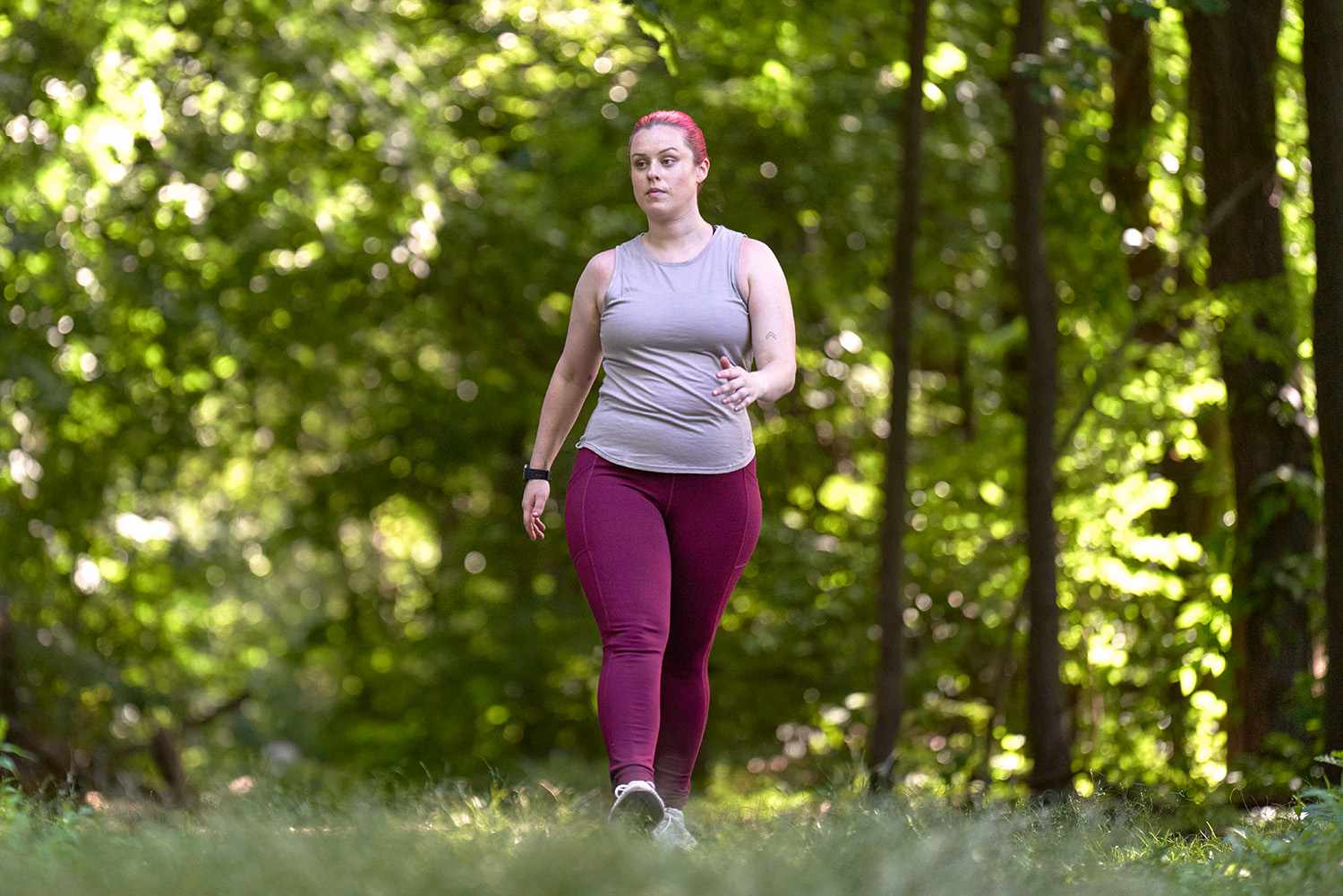Walking is a powerful tool when it comes to weight loss. It’s a simple and accessible form of exercise that can have a significant impact on your fitness journey. But how much do you actually need to walk in order to lose weight? In this blog post, we’ll find out the answer to that question and provide you with some valuable tips and insights to help you on your weight loss journey.

Contents
How Much to Walk for Weight Loss?
Walking is a fantastic, accessible way to shed pounds and improve your overall health. But how much should you walk for results? Worry not, here we will help you craft a personalized plan for success!
Understanding the Formula:
Calories & Weight Loss: To lose weight, you need to burn more calories than you consume. Aim for a calorie deficit of 3,500 calories per week to lose 1 pound. Brisk walking for 30 minutes burns roughly 100-300 calories, depending on factors like weight, pace, and terrain. Remember, even small deficits add up!
General Recommendations:
- Pace: Aim for brisk walking, where you can hold a conversation but your breathing and heart rate increase.
- Duration: Start with at least 30 minutes, 5 days a week. Gradually increase to 45-60 minutes or longer as you get fitter.
- Intensity: Boost calorie burn with intervals of faster walking or incline walking.
- Frequency: Consistency is key! Aim for walks most days, even if they’re short breaks.
Step Up Your Game:
- Track Your Steps: Aim for 10,000 steps per day, but adjust based on your needs. Use a pedometer or fitness tracker for motivation and monitoring.
- Challenge Yourself: As you get fitter, increase distance, pace, or incline for progressive improvement.
- Get Creative: Break walks into smaller chunks, find walking buddies, explore new routes, or combine them with other activities like strength training.

Remember:
- Diet Matters: Combine walking with a healthy diet for optimal results.
- Individualize: Consider your weight, fitness level, and goals when setting your walking goals.
- Start Slow: Begin with manageable walks and gradually progress to avoid injury.
- Listen to Your Body: Don’t push yourself too hard, take rest days, and consult your doctor if needed.
Pro-Tips for Extra Boost:
- HIIT it Up: Incorporate short bursts of high-intensity walking into your routine for a calorie-burning kick.
- Embrace Hills: Walking on inclines engages more muscles and burns more calories.
- Swing into Action: Swing your arms while walking for added calorie expenditure.
- Track Your Progress: Monitor your steps, distance, and calories burned for motivation and plan adjustments.
Walking is more than just weight loss; it’s about improving cardiovascular health, strengthening bones, reducing stress, and boosting sleep. Find walking enjoyable, join walking groups for social interaction, and remember, consistency is key!
Benefits of Walking for Weight Loss
Walking is an excellent and accessible form of exercise that offers several benefits for weight loss. Here are some key advantages:

-
Calorie Burn: Walking burns calories, making it an effective way to create a calorie deficit, which is essential for weight loss. The more briskly you walk, the more calories you’ll burn.
-
Sustainable: Walking is a low-impact exercise that is easy on the joints and can be sustained over the long term. Consistency is key for successful weight loss.
-
Appetite Control: Physical activity like walking can help regulate appetite hormones, making you feel less hungry and reducing the likelihood of overeating.
-
Metabolism Boost: Regular walking can increase your metabolic rate, allowing you to burn more calories even when you’re at rest.
-
Improved Mood: Walking releases endorphins, which can boost your mood and reduce stress. This can be especially helpful for emotional eaters.
-
Heart Health: Walking is good for your cardiovascular health, reducing the risk of heart disease and improving circulation.
How Can You Burn More Calories While Walking?
By incorporating these tips into your walking routine, you can increase the intensity and effectiveness of your workouts, helping you achieve your weight loss goals. Here’s what you can do:
1. Increase your walking speed:
Walking at a faster pace increases your heart rate and burns more calories. Aim to walk at a brisk pace, where your breathing becomes slightly heavier, but you can still hold a conversation. This intensity will help you burn more calories per hour and make your walking workouts more efficient.
2. Incorporate intervals:
Interval training involves alternating between periods of high-intensity walking and recovery periods of moderate intensity. This method challenges your cardiovascular system and can lead to greater calorie burn post-workout. For example, try walking at a fast pace for one minute, then slow down for two minutes. Repeat these intervals throughout your walk.
3. Add inclines or hills:
Walking uphill or on an inclined surface engages more muscle groups and increases the intensity of your workout. This helps you burn more calories and build strength in your lower body. Look for hilly routes or find a treadmill with an incline feature to incorporate these variations into your walking routine.
4. Increase your walking duration:
Simply walking for a longer period of time can lead to increased calorie burn. Gradually increase the duration of your walks as your fitness level improves. Start by adding a few minutes to your usual walking time and work your way up to longer sessions. Aim for at least 30 minutes of walking per day for weight loss benefits.
5. Maintain proper form:
Pay attention to your posture while walking. Keep your head up, shoulders relaxed, and engage your core muscles. Swing your arms naturally and take longer strides to increase the intensity of your walk. These techniques can help you expend more energy and burn more calories.
Frequently Asked Questions
How much weight can I lose in 1 month by walking?
According to experts, an individual can burn up to 5,600 calories a month, which is roughly 1.6 pounds, by walking alone.
How many miles do you have to walk to lose 1 lb?
To lose 1 pound, you’ll need to walk roughly 35 miles or 70,000 steps, which is equivalent to about 10,000 steps a day over the course of a week.
Can I lose weight by walking 30 minutes everyday?
Absolutely! Adding 30 minutes of brisk walking to your daily routine can help you burn about 150 more calories per day.
Can you lose belly fat by walking?
Research shows that just 2 1/2 hours of brisk walking a week, which is about 20 minutes a day, can shrink your belly by about 1 inch in 4 weeks.
Does walking tone your butt?
While walking doesn’t directly target your butt, you can strengthen and tone your glutes by making some strategic tweaks to your daily stroll.

Hello, I’m Ravindra. Over the years, I’ve immersed myself deeply into the world of fitness and health, transforming both my body and mind. Writing has allowed me to share my journey, insights, and expertise with those just starting out and seasoned fitness enthusiasts alike. Beyond just routines and diets, I believe in inspiring others to adopt a holistic approach to well-being.
